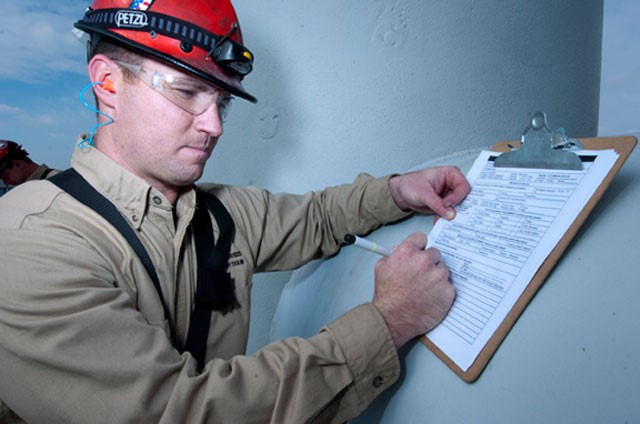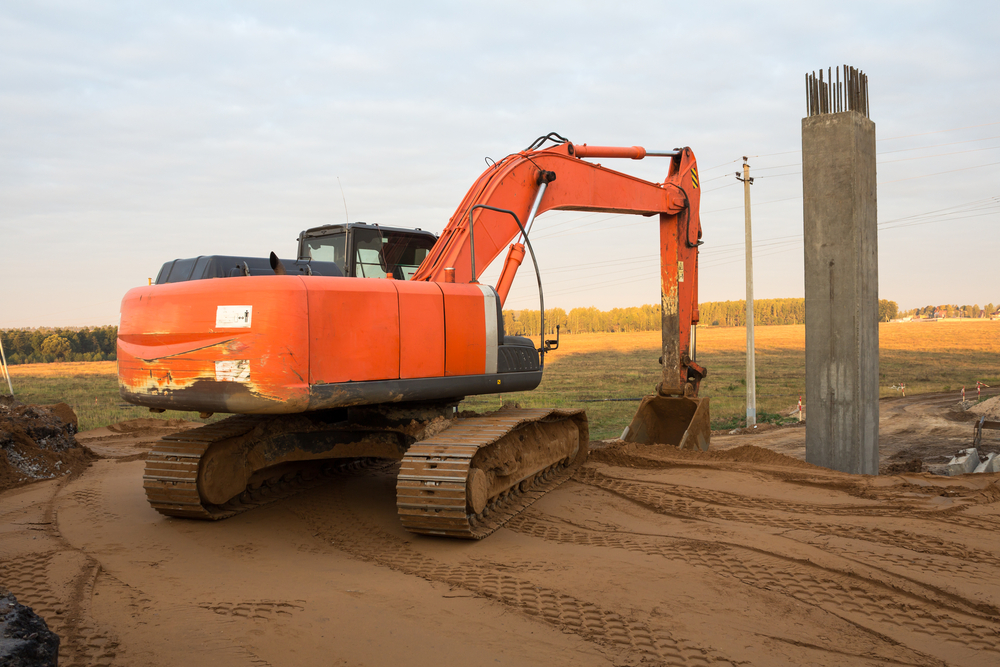 Seven challenging rescue scenarios awaited participating teams at Roco Rescue Challenge 2018 recently held in Baton Rouge. Multiple training props at and near the Roco Training Center (RTC) were used to create the realistic problem-solving scenarios, which included both props at the RTC as well as the training tower and the “industrial prop” at the Baton Rouge Fire Department. These facilities provided a wide variety of rescue scenarios and rigging environments for the teams during the two-day event.
Seven challenging rescue scenarios awaited participating teams at Roco Rescue Challenge 2018 recently held in Baton Rouge. Multiple training props at and near the Roco Training Center (RTC) were used to create the realistic problem-solving scenarios, which included both props at the RTC as well as the training tower and the “industrial prop” at the Baton Rouge Fire Department. These facilities provided a wide variety of rescue scenarios and rigging environments for the teams during the two-day event.Challenge teams were required to successfully complete scenarios in all six (6) Confined Space Types based on OSHA-defined criteria in addition to Rescue from Fall Protection and Extrication. The scenarios were designed to meet OSHA1 and NFPA2 requirements for annual practice and evaluation of team capabilities as well as the individual rescuers. Participating teams received third party testing of the scenarios and individual rescuer skills along with documentation to back up the testing. Following Rescue Challenge, each team receives a complete report of the scenarios along with their scores, strengths and weaknesses as well as debriefing notes from the instructor evaluators.

Speaking of evaluators, this year featured some of Roco’s top instructors who hailed from Idaho to New York. These individuals are passionate about teaching rescue and improving the performance of their students. No doubt they’re a big part of why the event is so successful and so effective in honing the teams’ skills. In fact, this year’s event was dedicated to the memory of one of our long-time instructors and original Roco Rangers, Mr. Doug Norwood.
 All Challenge scenarios are designed to have teaching goals that require different rescue and rigging skills. They included simulated IDLH rescue entries with the use of SAR and SCBA equipment. Also included were single-person and multi-casualty scenarios with a mix of manikins and live victims/evaluators as patients.
All Challenge scenarios are designed to have teaching goals that require different rescue and rigging skills. They included simulated IDLH rescue entries with the use of SAR and SCBA equipment. Also included were single-person and multi-casualty scenarios with a mix of manikins and live victims/evaluators as patients.
1. Seven rescue scenarios;
2. Individual Performance Evaluations (IPE); and,
3. A Team Performance Evaluation (TPE).
Here is a quick break down of the two-day event:
DAY ONE
Station#1 – CS Types #3, #4 & #6
A worker fell approximately 8 ft. while working on a motor in a fan plenum on a cooling tower. The worker fell through the fan to the cooling pipes below and suffered from heat exhaustion and a possible broken/dislocated hip. Access and egress to the patient and ground was through a series of ladder cages at approximately the 50 ft. level.
Station #2 – Rescue from Fall Protection
A worker who was painting on top of a 50 ft. dome column tower fell onto his fall protection system. Access by the technical rescue team was over the top of the dome to the far side of the tower where rescuers needed to transfer the patient from his system to the rescuer’s system before descending to safety.
 Station #3 – CS Types #3 & #2
Station #3 – CS Types #3 & #2Three workers were trapped in a “Stack” elevator that jumped off its track. The scenario simulated rescue from a height of 300 ft. requiring knot-passing techniques.
Station #4 – CS Type #4
A reenactment of an OSHA confined space incident where two entrants were injured in a flash fire in a confined space, which required on-air entry using SCBA.
Station #5 – CS Type #4
The rescue of an unconscious worker from a column vessel with multiple internal trays, requiring that the patient be lowered approximately 40 ft. to the ground.
%20smlr.jpg) DAY TWO
DAY TWOStation #6 – CS Type #5
A worker was trapped under a piece of machinery (2000lbs+) in a containment vault. Teams used rescue airbags and cribbing to raise and extricate the individual from under the object before completing a low-point confined space rescue from a vertical-entry confined space.
Station #7 – CS Types #1 & #3
Report of a worker down in a low O2 atmosphere in a boiler expansion tank. Teams were forced to ascend a vertical temporary ladder approximately 10 ft. inside a 24-in. tube to access the individual while wearing SAR due to low levels of oxygen.
Station #8 – Individual Performance Evaluation (IPE)
Station #9 – Team Performance Evaluation (TPE)
Scoring was very tight this year with all teams scoring between 85% to 90% overall. Roco scoring is based on the following: 90% and above “superior rescue team;” 80%-89% “excellent rescue team;” and 70%-79% “capable rescue team.” Scores below 70% require the teams to redo the scenario once it is critiqued and any safety concerns are addressed.
 We also had numerous observers at this year’s Challenge both from the municipal and industrial sectors. They reported that they were able to see “first hand” the benefits of Rescue Challenge, and that they are planning on sending teams for next year’s event.
We also had numerous observers at this year’s Challenge both from the municipal and industrial sectors. They reported that they were able to see “first hand” the benefits of Rescue Challenge, and that they are planning on sending teams for next year’s event.One observer commented that the format and location allowed teams to get out of their comfort zones and have a good look at how they would respond to an actual incident at their facility.Some of the exceptional performances this year included:
Shell-Convent, LA: Overall highest average of 90% for all scenarios.
Valero-Wilmington, CA: 1st place IPE station.
CF Industries-Donaldsonville, LA: 1st place TPE station.
Two Louisiana teams (International Paper-Bogalusa and Shell-Norco) tied for “Top Score” on a single scenario scoring 490 out of 500 possible points.
If you missed this year’s Rescue Challenge, join us next year on October 23-24, 2019, in Baton Rouge. Every year our instructors devise new surprise obstacles to challenge teams with hurdles they’ve never tackled before.
Is your team “Rescue Challenge ready?”
1OSHA 1910.146 Permit-Required Confined Spaces
1910.146(k)(2)(iv) Ensure that affected employees practice making permit space rescues at least once every 12 months, by means of simulated rescue operations in which they remove dummies, manikins, or actual persons from the actual permit spaces or from representative permit spaces. Representative permit spaces shall, with respect to opening size, configuration, and accessibility, simulate the types of permit spaces from which rescue is to be performed.
2NFPA 1006 Technical Rescue Personnel Professional Qualifications
1.2.6* Technical rescue personnel shall remain current with the general knowledge, skills, and JPRs addressed for each level or position of qualification. Technical rescue personnel shall remain current with technical rescue practices and applicable standards and shall demonstrate competency on an annual basis.
 |
 |
 |
 |
 |
 |
-smlr.jpg) |
 |
 |
 |
%20smlr.jpg) |
 |
 |
 |
 |
 |
 |
smlr.jpg) |
 |
 |
 |
 |
 |
 |
 |
 |
 |
 |
 |
 |
 |
 |
 |
 |
 |
 |
 |
 |
 |
 |
 |
 |
 |
 |
 |
 |
||


 Of course, the security of the system's attachment to the crane and the ability to “lock-out” any potential movement are a critical part of the planning process. If powered industrial equipment is to be used as a high-point, it must be treated like any other energized equipment with regard to safety. Personnel would need to follow the Control of Hazardous Energy [Lockout/Tagout 1910.147]. The equipment would need to be properly locked out – (i.e., keys removed, power switch disabled, etc.). You would also need to check the manufacturer’s limitations for use to ensure you are not going outside the approved use of the equipment.
Of course, the security of the system's attachment to the crane and the ability to “lock-out” any potential movement are a critical part of the planning process. If powered industrial equipment is to be used as a high-point, it must be treated like any other energized equipment with regard to safety. Personnel would need to follow the Control of Hazardous Energy [Lockout/Tagout 1910.147]. The equipment would need to be properly locked out – (i.e., keys removed, power switch disabled, etc.). You would also need to check the manufacturer’s limitations for use to ensure you are not going outside the approved use of the equipment. This is where the employer must complete written rescue plans for permit-required confined spaces and for workers-at-height using personal fall arrest systems – or they must ensure that the designated rescue service has done so. When developing rescue plans, it may be determined that there is no other feasible means to provide rescue without increasing the risk to the rescuer(s) and victim(s) other than using a crane to move the human load. These situations would be very rare and would require very thorough documentation. Such documentation may include written descriptions and photos of the area as part of the justification for using a crane in rescue operations.
This is where the employer must complete written rescue plans for permit-required confined spaces and for workers-at-height using personal fall arrest systems – or they must ensure that the designated rescue service has done so. When developing rescue plans, it may be determined that there is no other feasible means to provide rescue without increasing the risk to the rescuer(s) and victim(s) other than using a crane to move the human load. These situations would be very rare and would require very thorough documentation. Such documentation may include written descriptions and photos of the area as part of the justification for using a crane in rescue operations. Of course, one of the most important considerations in using any type of mechanical device is its strength and ability (or inability) to “feel the load.” If the load becomes hung up on an obstacle while movement is underway, serious injury to the victim or an overpowering of system components can happen almost instantly. No matter how much experience a crane operator has, when dealing with human loads, there is no way he can feel if the load becomes entangled. And, most likely, he will not be able to stop before injury or damage occurs.
Of course, one of the most important considerations in using any type of mechanical device is its strength and ability (or inability) to “feel the load.” If the load becomes hung up on an obstacle while movement is underway, serious injury to the victim or an overpowering of system components can happen almost instantly. No matter how much experience a crane operator has, when dealing with human loads, there is no way he can feel if the load becomes entangled. And, most likely, he will not be able to stop before injury or damage occurs.  There are countless injuries and deaths across the nation when workers are not taught to recognize the inherent dangers of permit spaces. They are not trained when "not to enter" for their own safety. Many of these tragedies could be averted if workers were taught to recognize the dangers and know when NOT to enter a confined space.
There are countless injuries and deaths across the nation when workers are not taught to recognize the inherent dangers of permit spaces. They are not trained when "not to enter" for their own safety. Many of these tragedies could be averted if workers were taught to recognize the dangers and know when NOT to enter a confined space. The DPW had developed a permit-required confined space program but stopped implementing it in 2004 when the last trained employee retired. They also had purchased a four-gas (oxygen, hydrogen sulfide, carbon monoxide and combustible gases) monitor and a retrieval tripod to be used during the training. It was reported that a permit-required confined space program was never developed because DPW policy “prohibited workers” from entering a manhole. However, the no-entry policy was not enforced. Numerous incidents of workers entering manholes were confirmed by employee interviews.
The DPW had developed a permit-required confined space program but stopped implementing it in 2004 when the last trained employee retired. They also had purchased a four-gas (oxygen, hydrogen sulfide, carbon monoxide and combustible gases) monitor and a retrieval tripod to be used during the training. It was reported that a permit-required confined space program was never developed because DPW policy “prohibited workers” from entering a manhole. However, the no-entry policy was not enforced. Numerous incidents of workers entering manholes were confirmed by employee interviews..jpg) We all want to succeed, no matter what we are doing. And success is always better than the alternatives…whether a mediocre performance or worse yet, failure.
We all want to succeed, no matter what we are doing. And success is always better than the alternatives…whether a mediocre performance or worse yet, failure.




